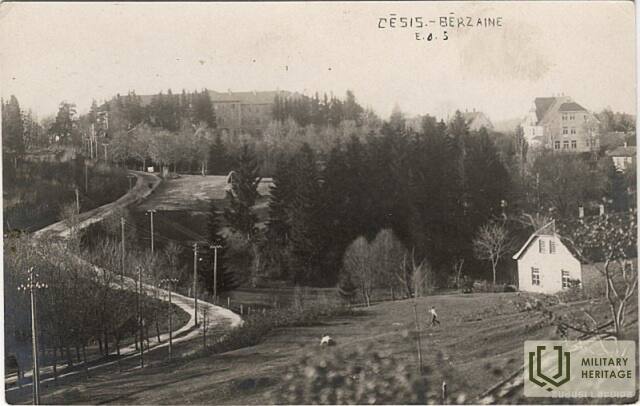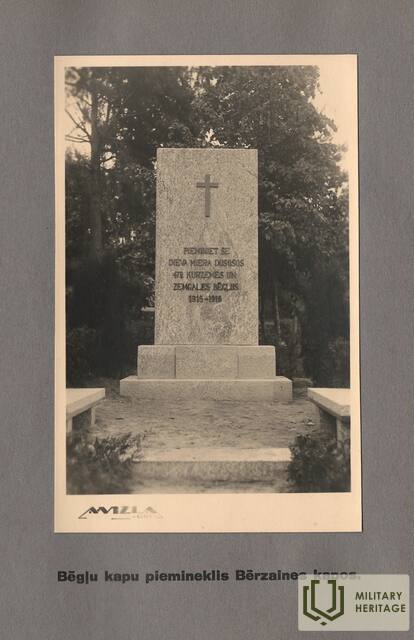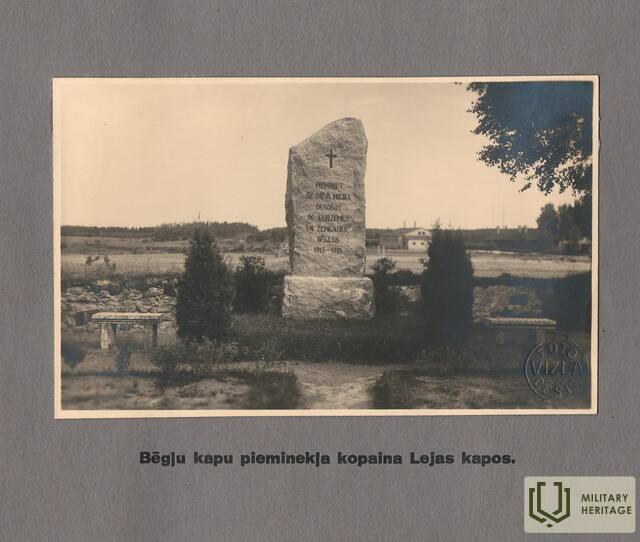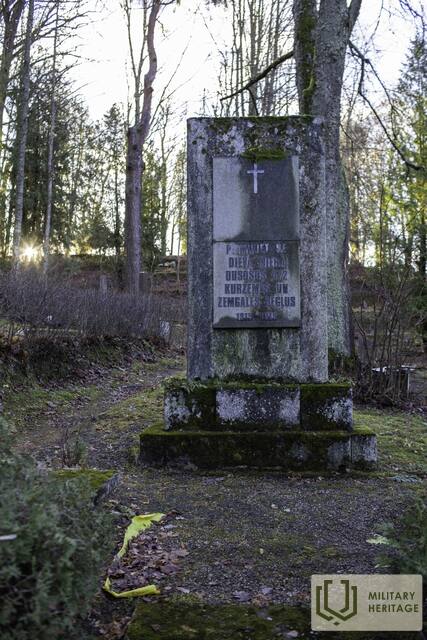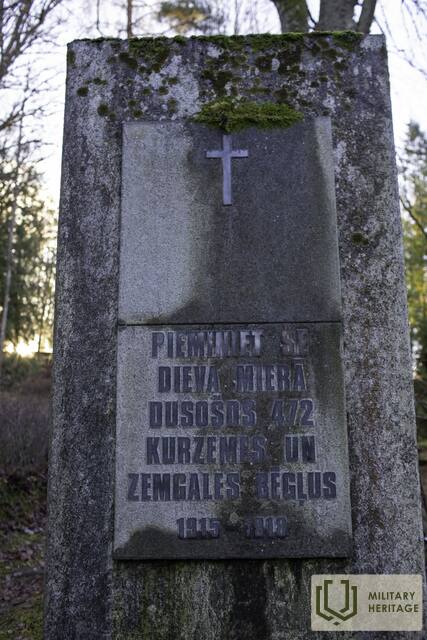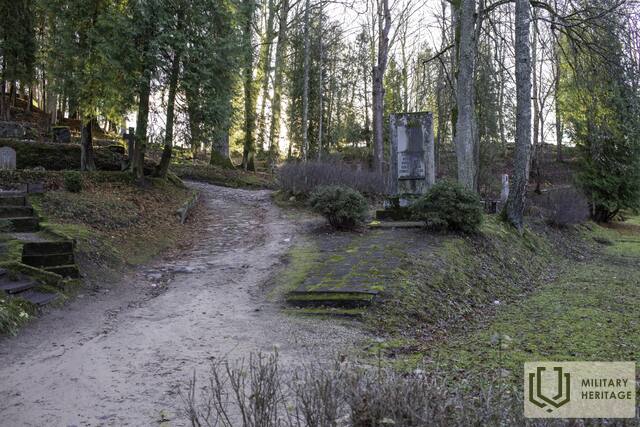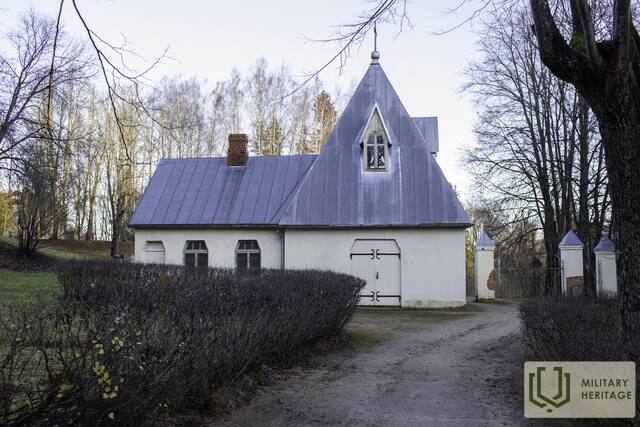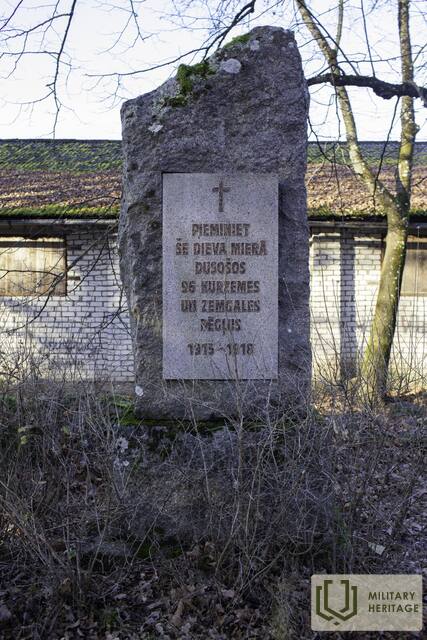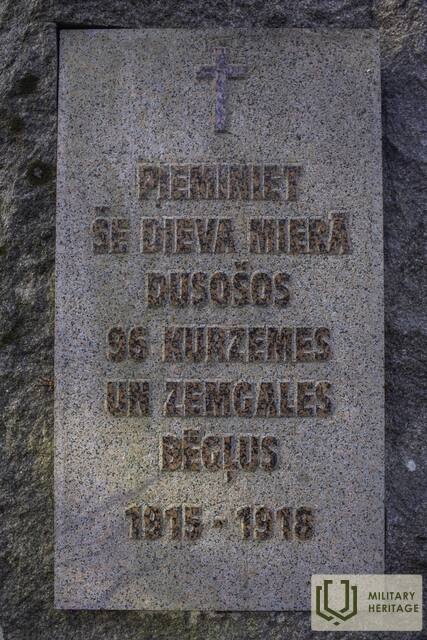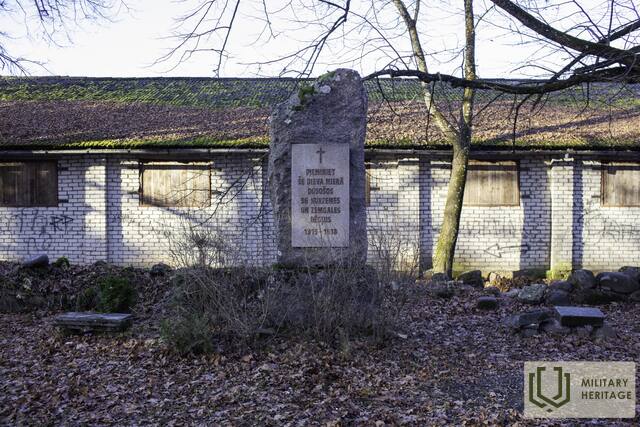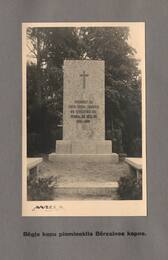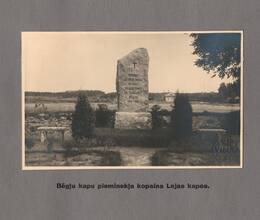Kuržemės ir Žiemgalos pabėgėlių atminimo vietos ir palaidojimai Cėsiuose
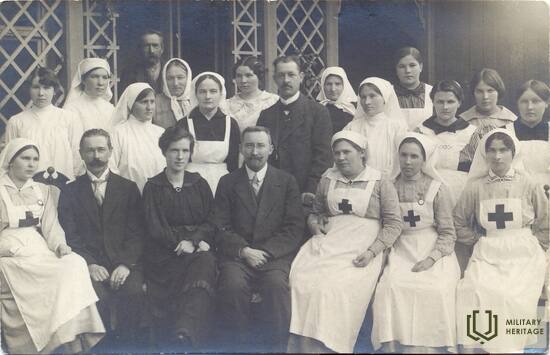
Prieš Pirmąjį pasaulinį karą Latvijos teritorijoje gyveno 2 552 tūkst. žmonių. 1920 m. surašymo duomenimis, jų buvo 1 596 tūkst. Tai reiškia, kad per šį laikotarpį Latvijos gyventojų skaičius sumažėjo 956 tūkst. žmonių arba 37,5 %.
1915 m. vasarą vokiečių kariuomenė okupavo Kuršą ir Žiemgalą. Daugiau nei pusė milijono pabėgėlių begaliniu srautu paliko savo gimtąsias vietas. Pirmieji pabėgėliai į Cėsį atvyko 1915 m. balandžio mėn.
1914 m. Cėsyje buvo įkurtas „Cėsių miesto ir apylinkių latvių pagalbos komitetas“, kuris savo ruožtu buvo padalintas į pakomitečius: pabėgėlių registracijos, ligoninių, darželių, maitinimo, batsiuvio ir kt. Vietos gyventojai atliko įvairius darbus, kad bent jau palengvintų nežmoniškas 2705 Cėsyje apsigyvenusių pabėgėlių gyvenimo sąlygas.
Nuo 1915 m. rugpjūčio iki 2018 m. gegužės Cėsyje veikė Pirmoji pabėgėlių ligoninė, kurioje buvo gydoma 2130 pacientų. 1915 m. rugpjūčio 24 d. Cėsyje, Jaunojoje (dabar Piebalgas) gatvėje 6, buvo atidaryta 50 lovų pabėgėlių ligoninė ir ambulatorinė infekcinių ligų klinika, vadovaujama dr. med. E. Akermanos (1878–1954). Jo žmona, gydytoja V. Treigute-Akermane (1883–1970), vadovavo antrajai pabėgėlių ligoninei ir ambulatorijai, atidarytai Cėsyje. Sankt Peterburge sušauktame medicinos kongrese, skirtame spręsti aktualius pabėgėlių ir vietos gyventojų gydymo klausimus, 1916 m. balandžio mėn. Latvijos gydytojams taip pat atstovavo dr. med. E. Akermanis iš Cėsių. Pareiškime „Cēsu Avīze“ Baltijos pabėgėlių aprūpinimo komitetas priminė Cėsių gyventojams, kad „ypač sergantys užkrečiamosiomis ligomis nedelsiant guldomi į pabėgėlių ligonines“.
To meto prisiminimuose vyresnioji slaugytoja Eba Krēmane (1875–1942) minima kaip nesavanaudiškumo ir gailestingumo simbolis. Pagalbos darbų organizavimo imasi ir Cėsių miesto parapijos klebonas prof. Voldemaras Maldonis (1870–1941).
Nepaisant pastangų, vien epidemijų metu žuvo apie 700 pabėgėlių. Jie buvo palaidoti Lėjos ir Bērzainės kapinėse.
1933 m. vasario 17 d. Rygoje susirinko pabėgėlių komitetas, kuris nusprendė „veikti kaip Cėsių miesto parapijos padalinys, kurio tikslas – rinkti ir gražinti pabėgėlių kapines, taip pat statyti paminklus Cėsių ir apylinkių kapinėse“.
Iki 1935 m. gegužės mėn. buvo paaukota 6 883,20 lato.
1936 m. vasario 11 d. buvo susitarta su skulptoriumi Kārliu Jansonu (1896–1986) pastatyti paminklus Lėjos ir Bērzainės kapinėse. Abu paminklai buvo atidengti 1936 m. birželio 14 d., o jų statyba kainavo 4600 latų.
Apatinėse kapinėse virš kvadratinio pagrindo iškyla grubiai aptašyta granito stela, kurios viršuje yra bronzinis kryžius. Po ja – bronzinėmis raidėmis užrašytas pranešimas:
PAMĖGIMAS
ČIA, DIEVO RAMYBĖJE
METU
96 COURZIE
IR ŽEMGALĖ
PABĖGĖLIAI
1915–1918 m.
Bērzainės kapinėse granito laiptai veda į piliakalnį, kur virš dviejų pakopų pagrindo kyla stela. Lygiame granito paviršiuje puikuojasi bronzinis kryžius, po kuriuo bronzinėmis raidėmis iškalti žodžiai:
PAMĖTI ČIA
Ilsėkis Dievo ramybėje
472 COURZIE IR
PABĖGĖLIAI IŠ ŽEMGALĖS
1915–1918 m.
Pabėgėlių ir karo belaisvių grįžimas prasidėjo jau 1919 m., iškart po naujos Latvijos valstybės įkūrimo. Tačiau masinė reemigracija vyko 1920–1921 m., kai grįžo beveik 200 tūkstančių žmonių. Žmonės taip pat grįžo namo 1922–1927 m., tačiau grįžtančiųjų skaičius vis mažėjo.
S.Upīte, P.Puķīte, Pirmojo pasaulinio karo ir laisvės kovų memorialinės vietos Cėsių rajone, Cėsių muziejų draugija, 1989 m.
https://www.literatura.lv/lv/person/Voldemars-Maldonis/873554
http://www.muzejs.cesis.lv/lv/jubilaru-pietura-cesis/
http://edruva.lv/piemineklis-berzaines-kapos/
https://lr1.lsm.lv/lv/raksts/siis-dienas-aciim/latviesu-begli-krievija-pirma-pasaules-kara-laika.a55907/
https://www.vestnesis.lv/ta/id/31751
Susijusi laiko juosta
Susijusios temos
Susijusios vietos
Paminklas Pirmojo pasaulinio karo pabėgėliams iš Kuržemės ir Žiemgalos
Įsikūręs Bērzainės kapinėse
Paminklas Pirmojo pasaulinio karo pabėgėliams iš Kuržemės ir Žiemgalos.
1933 m. vasario 17 d. Rygoje susirinko pabėgėlių komitetas, kuris nusprendė „veikti kaip Cėsių miesto parapijos padalinys, kurio tikslas – rinkti ir gražinti pabėgėlių kapines, taip pat statyti paminklus Cėsių ir apylinkių kapinėse“.
Iki 1935 m. gegužės mėn. buvo paaukota 6 883,20 lato.
1936 m. vasario 11 d. buvo susitarta su skulptoriumi Kārliu Jansonu pastatyti paminklus Lėjos ir Bērzainės kapinėse. Abu paminklai buvo atidengti 1936 m. birželio 14 d., o jų statyba kainavo 4600 latų.
Bērzainės kapinėse granito laiptai veda į piliakalnį, kur virš dviejų pakopų pagrindo kyla stela. Lygiame granito paviršiuje puikuojasi bronzinis kryžius, po kuriuo bronzinėmis raidėmis iškalti žodžiai:
PAMĖTI ČIA
Ilsėkis Dievo ramybėje
472 COURZIE IR
PABĖGĖLIAI IŠ ŽEMGALĖS
1915–1918 m.
Paminklas Pirmojo pasaulinio karo pabėgėliams iš Kuržemės ir Žiemgalos Lėjos kapinėse
Įsikūręs Cėsių Žemutinėse kapinėse.
Verta aplankyti paminklą Pirmojo pasaulinio karo pabėgėliams iš Kuržemės ir Žiemgalos.
Apatinėse kapinėse virš kvadratinio pagrindo iškyla grubiai aptašyta granito stela, kurios viršuje yra bronzinis kryžius. Po ja – bronzinėmis raidėmis užrašytas pranešimas:
PAMĖGIMAS
ČIA, DIEVO RAMYBĖJE
METU
96 COURZIE
IR ŽEMGALĖ
PABĖGĖLIAI
1915–1918 m.
1933 m. vasario 17 d. Rygoje susirinko pabėgėlių komitetas, kuris nusprendė „veikti kaip Cėsių miesto parapijos padalinys, kurio tikslas – rinkti ir gražinti pabėgėlių kapines, taip pat statyti paminklus Cėsių ir apylinkių kapinėse“.
Iki 1935 m. gegužės mėn. buvo paaukota 6 883,20 lato.
1936 m. vasario 11 d. buvo susitarta su skulptoriumi Kārliu Jansonu pastatyti paminklus Lėjos ir Bērzainės kapinėse. Abu paminklai buvo atidengti 1936 m. birželio 14 d., o jų statyba kainavo 4600 latų.




